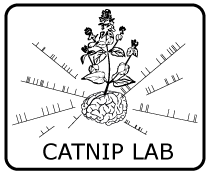Recurrent Network Models of Sequence Generation and Memory (2016)
- Paper Kanaka Rajan, Christopher D. Harvey, David W. Tank. Recurrent Network Models of Sequence Generation and Memory, Neuron.(2016)
- Abstract
Sequential activation of neurons is a common feature of network activity during a variety of behaviors, including working memory and decision making. Previous network models for sequences and memory emphasized specialized architectures in which a principled mechanism is pre-wired into their connectivity. Here we demonstrate that, starting from random connectivity and modifying a small fraction of connections, a largely disordered recurrent network can produce sequences and implement working memory efficiently. We use this process, called Partial In-Network Training (PINning), to model and match cellular resolution imaging data from the posterior parietal cortex during a virtual memoryguided two-alternative forced-choice task. Analysis of the connectivity reveals that sequences propagate by the cooperation between recurrent synaptic interactions and external inputs, rather than through feedforward or asymmetric connections. Together our results suggest that neural sequences may emerge through learning from largely unstructured network architectures.
